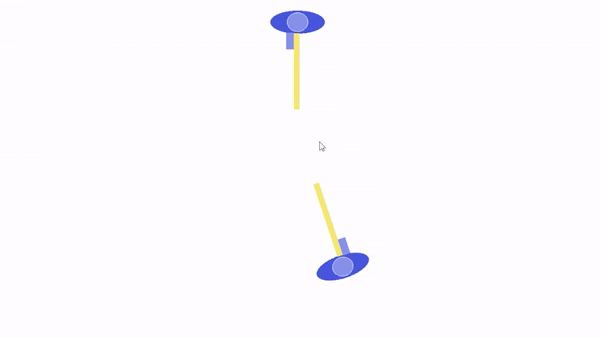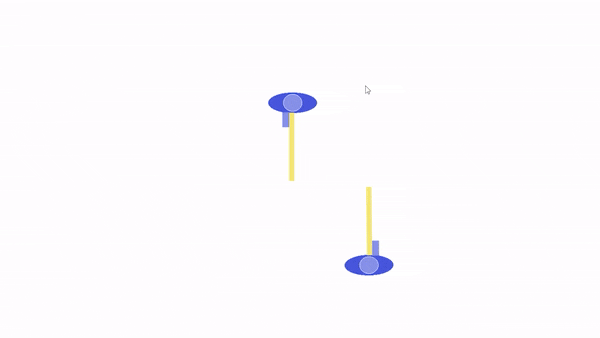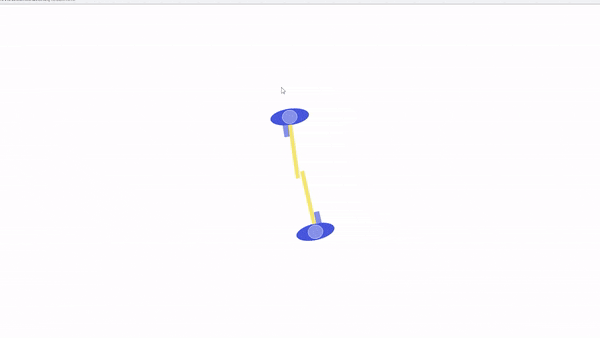
Whatever it is, the way you tell your story online can make all the difference.
FIVE STEPS DEVELOPMENT
In this section, I am structuring the development of my game idea. I will be using the 5C model to plan the entire development process:
1.COLLECT
Understand the principle of Kendo
2.COMPREHEND
Analyse the information and explore the interesting aspects
Think about how I can convert the research into game elements
3.CONCEPTUALIZE
Design the essential experience
Design the core gameplay mechanics
Design the art direction
Design the music direction
4.CREATE
Experiment with the core gameplay mechanics
Experiment with the assets
Create a high fidelity demo for future development
5.COLLABORATE (if needed)
Collaborate with musicians & artists for asset development
6.COMMUNICATE
Upload the game to Kendo(or other) communities for playtests
Gaining feedback for future development
COLLECT
Research & information gathering
WHAT IS KENDO?
Kendo is a traditional Japanese martial art that originated from ancient Japanese sword fights. KEN means ‘sword/blade’, and DO means ‘the way’. In translation, Kendo means the way of the sword.
RULES OF KENDO
Similar to what we see in the samurai movies, kendo adapts to a duel-based rule in which two people fight against each other in a square space. Whoever strikes effectively receives one point and proceed to the second round. There are usually two rounds in a row.
KENDO EQUIPMENT
There are two parts of the Kendo outfit - clothing and armour:
Clothing - Gi is the traditional Japanese top with medium length sleeves; Hakama is the traditional bottom dress that covers the entire leg
Armour(Bogu) - Men is the leather helmet, that protects the head; Kote is the leather glove, that protects the hand; Do si the chest piece, that protects the chest and stomach; Tare is the 5 pieces of leather that protects the private part
Shinai is the weapon people use to strike. It is made out of bamboo, usually assembled in four pieces to reduce the damage it causes to others. It has four parts: Tsuka is the handle where people grip; Tsuba is the guard that protects kendoka’s hand; Jinbu is the bamboo-part not covered in leather, it extends the attack range and also can be used to defend; Datosubu is the small bamboo-part between Nakayui and Sakigawa, and is the only part that makes the effective strike. The maximum length of a shinai for adults is 120cm.
KENDO HIGHLIGHTS
There are only four parts where you can strike in kendo: Men(head), Kote(hand), Do(stomach) and Tsuki(throat). Here are two highlights that show you how to score in an actual Kendo match.
HOW TO SCORE IN KENDO
-

Seme
The person on the right takes the initiative by stepping into the attacking range first and breaking their opponent’s centerline
-

Strike
After breaking the opponent’s posture, the attacker strikes men( the head) beautifully with kikentaiichi(spirit, sword and body synchronise in the moment of striking)
-

Zanshin
After striking, the attacker runs to a distance to prevent the opponent to strike back
COMPREHEND
Research analysis
TAKING KENDO INTO ACTION GAMES
Kendo is a martial art/sport that requires high-speed performances but also includes a massive amount of details. These details contain not only the physical but also the mental conflicts that make Kendo feel like a real samurai duel. I believe that if I can take these little details into an action game, it will definitely create an immersive experience for the players.
I was interested in these points after the first & second-hand research:
High-speed duel
Mental conflicts between the two kendoka
The step called ‘seme’, putting pressure on the opponent and breaking their postures, including taking the centre and pushing their sword away
The step called ‘zanshin’, which is the actions that prevent the opponent from striking before they are completely dead(in the real battle) or lost
I made a short analysis of the kendo postures, based on my experience doing Kendo.
It’s interesting to see this way: the most stable posture is the posture that allows you to control the situation, therefore, Chudan-no-kamae (middle stance) is a good example: By pointing the sword to the opponent’s throat, you can attack or defend efficiently whilst creating threats.
However, the posture starts breaking when proceeding strikes:
Striking Men - leaving the Do & Kote open
Striking Kote - leaving Men & Tsuki open
Striking Do - leaving Men, Kote & Tsuki open
Tsuki - leaving Kote open
In conclusion, the less you move, the more stable you are, and the easier you can control the situation. This would be an interesting mechanic in a game.
The image on the left is a sketch of the shinai, I drew it to show its very interesting mechanism.
As we can see, a shinai has a narrower tip and a wider bottom, which can be seen as a triangular shape:
Interesting Shinai Mechanism
-

STEP1
When two kendoka pointing at each other's throat, both shinai should be on the same centerline
-

STEP2
Because of the shape of the shinai, when one kendoka steps in or take the initiative, their shinai will push the opponent’s shinai away from the centerline
-

STEP3
The deeper it goes, the wider angle will be created from the centerline. In the end, the one who controls the centre can easily strike whilst pushing their opponent’s shinai away
The mechanism of the shinai is very interesting, and I have tested it multiple times in the actual kendo practice. I think this should be a core mechanic for my game to create a unique sword fighting game that is no longer adapted on simple hack & slash mechanics.
Make it stand out.
It all begins with an idea. Maybe you want to launch a business. Maybe you want to turn a hobby into something more. Or maybe you have a creative project to share with the world. Whatever it is, the way you tell your story online can make all the difference.
CONCEPTUALIZE
Time to design the game
GAMEPLAY MECHANICS
Essential experience: to have the experience of ‘winning’ before attacking’
CONTROLS
WASD to move around
Mouse to control the directions of the sword
Left mouse button to strike
Right mouse button to block
Space for a small leap forward (fumikomi)
W+SPACE for a big leap forward
the player holds chudan-no-kamae(middle stance), pointing at the enemies’ throat
the player needs to break the enemy’s posture to perform a valid strike
push the enemy’s sword off centre
attack when the enemy is attacking
there are three parts player can strike: Men and Kote
CREATE
Let’s start making!
STEP 1. MAKING ASSET FOR PROTOTYPE
I am using construct 3 for game development because it allows me to make a 2D prototype very efficiently, especially when it comes to a small scale game like this one.
The very first goal is to make a small prototype to test out the mechanic. To do so, I quickly put together a to-down view figure who has a stick(shinai) in its hand:
Darker blue: body
Light blue circle: Men(head)
Light blue rectangle: Kote(hand)
Yellow bar: shinai(sword)
The reason I am separating different parts with different colours and shapes is that I want to assign multiple functions to each body part, and this method will help me organise the asset.
STEP 2. Character movement
Once the asset is made, I need to make it function, and this can be done by assigning behaviours to the asset.
According to the game design document, here are three behaviours I need to make the mechanic work:
Scroll to: This behaviour allows the camera to follow the player character so that it doesn’t go off-screen
8 Direction: This behaviour is good for top-down view games because it allows the player character to move in 8 directions
Solid: This is behaviour is particularly important because it turns the asset solid and allows it to collide with other game elements
Unfortunately, after the playtesting, I noticed that the behaviour ‘Scroll to’ makes the entire scene shake when the character collides with another object and creates an uncomfortable experience. Therefore, I decided to remove it.
Scroll to - Camera follows the player character
8 Directions - player character moves around in 8 directions
Solid - Player character will collide with another solid object
STEP 3. Character attack
According to the game design document, the attack is basically a forward leap:
Long-distance attack: W(hold) + Left Mouse Button(press)
Short-distance attack: Left Mouse Button(press)
I also added a collision polygon to the opponent to destroy the asset once been hit by the player
Short-distance attack: Left Mouse Button(press)
Long-distance attack: W(hold) + Left Mouse Button(press)
STEP 4. Shinai mechanism
To recreate the mechanism of a shinai (triangular shape, wider bottom protects the kendoka from being hit), I adjusted the collision polygon to the shape shown above. This collision shape will make the opponent’s attack off centre if the angle is right, which automatically creates a system of defence.
When both characters are pointing at each other’s centre line, the attack will slide off
STEP 5. Breaking opponent’s posture (seme mechanic)
A big part of Kendo is seme. One of the ways to seme is to control the opponent’s sword, this includes forcing it to go off the centerline and create an opening to attack. To recreate this mechanism, I made the Right Mouse Button for seme. When the button is pressed, it will push the opponent’s shinai away from the centre.
After putting all the mechanics together, this is how it looks like - correcting distance, seme, creating opening and attack.
Make it stand out.
-

Dream it.
It all begins with an idea. Maybe you want to launch a business. Maybe you want to turn a hobby into something more.
-

Build it.
It all begins with an idea. Maybe you want to launch a business. Maybe you want to turn a hobby into something more.
-

Grow it.
It all begins with an idea. Maybe you want to launch a business. Maybe you want to turn a hobby into something more.



























